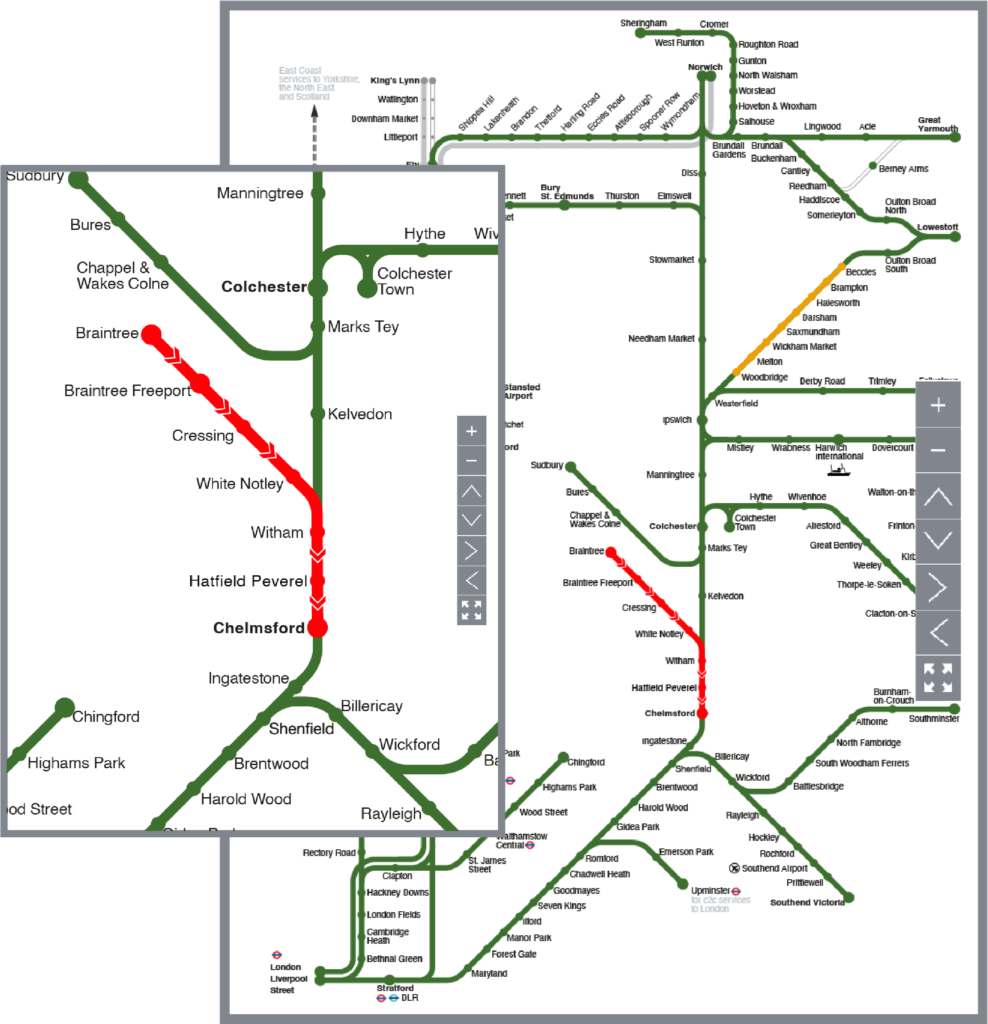Overview
Rainbow Boards combines both the Network Rail TD data and Darwin movement data to deliver a real-time, automated solution.
The ITAL Rainbow Board solution (service status indicator feed) will use and combine both the Network Rail TD data and data from the RDG Darwin solution.
The TD data will allow the network to be carved up to a route and station level to identify any delays between two locations. This method allows data down to a TIPLOC level, meaning the solution will be able to identify directional delays.
This will be overlayed by Darwin data that presents the customer view of any known delays to services.
By understanding the topology of the network, the solution algorithm will look for delays to train services between stations and apply an average delay time. The solution will also understand the timetable and will match delays to the frequency of service on each individual route. One cancellation on an hourly service will be “major disruption” to a customer.
The solution will be configurable to apply thresholds at various times of the day, on different days of the week to provide an accurate reflection of the service. This will be a data service providing a route status to the TOCs web agency who will present the disruption on a network map

Features
TIPLOC and Station level information available
Utilises proven industry data already available (TD.NET and Darwin)
Data to drive a full network map
The data has a directional awareness
Intelligent algorithms providing instant, accurate information to customers
Benefits
- An automated solution, removing the dependency of manual intervention
- No requirement to override a route status
- More accurate information
- Customers can identify their stations and journey easily
- Disruption is clearly highlighted – meaning customers can identify disruption that may affect their journey
- Disruption is directional
- Better, personalised information for customers
- The data can also be used on screens and TOC Apps
Problems we solve
Other solutions are dependent on controllers keeping up to date by manually inputting information. Should any information be missed or delayed, this will have a detrimental impact on the information presented to customers.
Customers do not always understand which route they are travelling on. They understand the station they are travelling from and to, but this is not detailed on the Rainbow Board route
Information focuses on train arrivals and departures at the station of boarding, and not on what is likely to happen on the journey. Passengers then travel and experience disruption to their journey.
They do not incorporate automated, real-time industry information such as train describer (TD) data from Network Rail and Darwin data from Rail Delivery Group (RDG) that has the latest delays to services and routes.
Existing Rainbow Board solutions often do not reflect the actual status of a route, presenting customers with disruption information that may not affect their journey. The status can suggest that the whole route is disrupted, when it may just be a section experiencing delays.